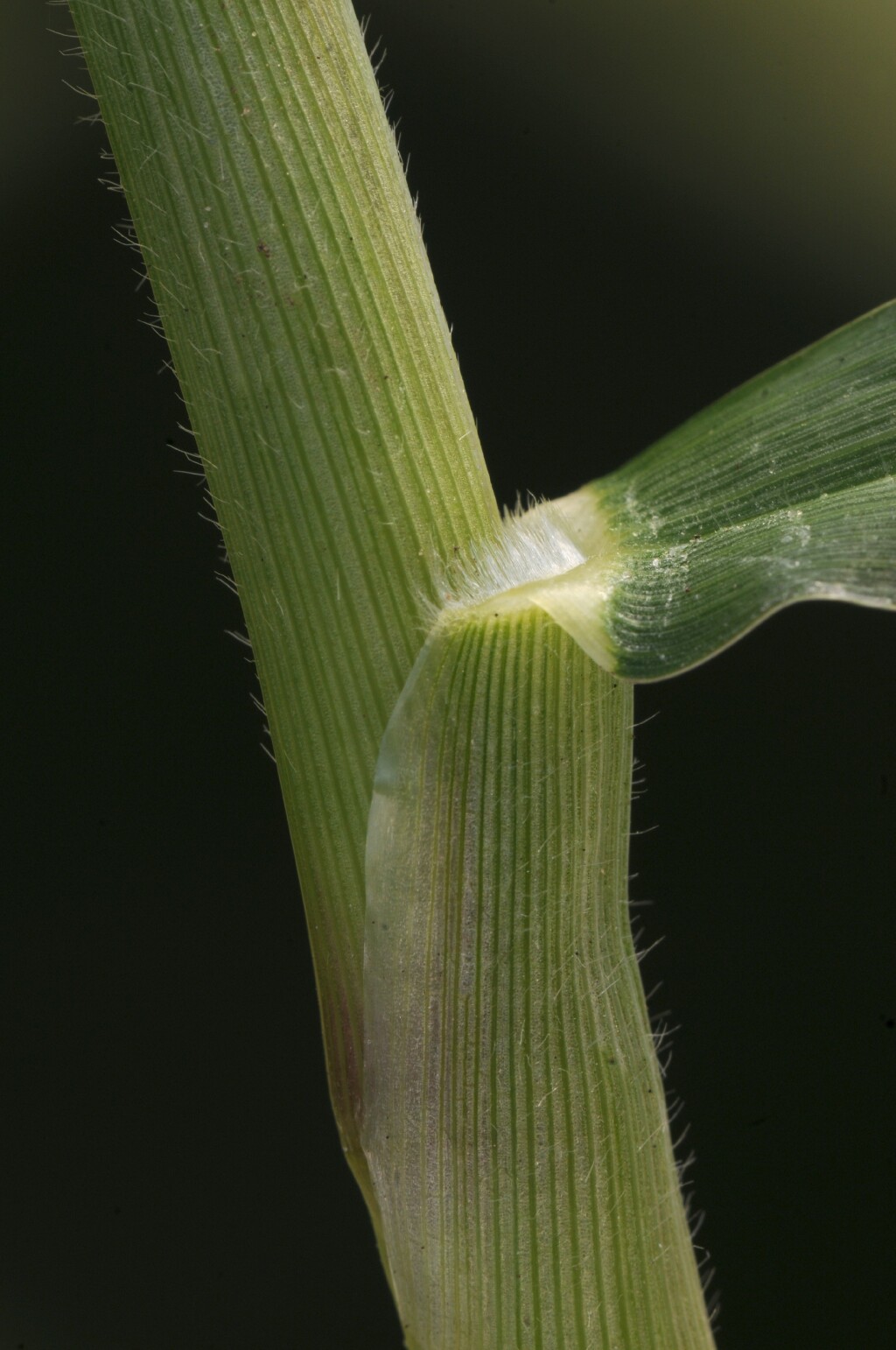Cenchrus clandestinus
(Hochst. ex Chiov) Morrone KikuyuVigorous, long-rhizomatous and stoloniferous perennial. Stems decumbent, or occasionally ascending through vegetation, bark etc., to 3 m when supported. Leaf-blades flat or folded, to 25 (but commonly only to c. 5) cm long and 6 mm wide, glabrous or with scattered hairs; sheaths ciliate along margins, sometimes with scattered hairs over surface; ligules 1–2 mm long. Inflorescence remaining wholly or largely enclosed within uppermost leaf-sheath, c. 1–2 cm long, usually comprising only 2–6 spikelets each on a short branch and subtended by an involucre 8–15 mm long (shorter than the spikelets). Spikelets narrow-lanceolate, 10–20 mm long; lower and upper glumes vestigial, represented by membranous scales, occasionally to 3 mm long, but usually much shorter, or sometimes absent; lower floret sterile, its lemma equal to the spikelet, 9–13-nerved, membranous, palea absent; upper floret bisexual, lemma equal to lower lemma, palea subequal to lemma; stamens briefly but prominently exserted at anthesis, the fine filaments 2–4 cm long. Flowers Jan.–Apr.
LoM, MuM, Wim, GleP, Brid, VVP, VRiv, MuF, GipP, OtP, WaP, Gold, CVU, GGr, DunT, NIS, EGL, EGU, WPro, HSF, HNF, OtR, Strz, VAlp. Naturalised in all States. Native to Africa. Naturalised through much of Victoria, particularly on sandy soils of the lowlands (e.g. coasts, north-west) and tolerating a degree of salinity. Widely grown as a hardy lawn species in most areas, failing to thrive in very heavy soils, in very dry areas and in cooler montane zones.
Walsh, N.G. (1994). Poaceae. In: Walsh, N.G.; Entwisle, T.J., Flora of Victoria Vol. 2, Ferns and Allied Plants, Conifers and Monocotyledons, pp. 356–627. Inkata Press, Melbourne.
 Spinning
Spinning




